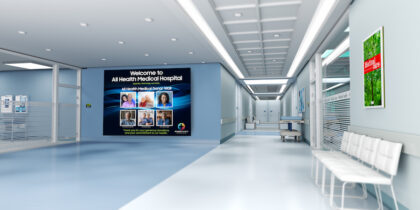Pharma has traditionally trailed behind other areas of healthcare when it comes to centering the patient, but medical technology advances promise to turn the way we engage with our pharmaceuticals, and their results, on its head.
Evolution
The terms “beyond-the-pill” and “around-the-pill” might be new to you, but you’ve likely encountered the concepts.
For years, healthcare and pharmaceutical firms have been working together to build programs that better connect patients with the drugs and services they use. Historically, these have included rudimentary solutions such as information-based websites and basic apps that educated patients about medical conditions and therapies. These solutions were essentially a marketing-based approach, dependent on existing provider platforms. Recently, though, the focus has shifted to improving patient behavior and outcomes, and that’s for a good reason.
According to Express Scripts, half of U.S. patients are noncompliant with their drug regimens, and 30 percent of prescriptions are not filled. This, combined with poor provider adherence to protocols, contributes to inadequate treatment and increased healthcare costs. Together, those two factors are named as the source of 125,000 deaths each year as well as a cost of $100 to $300 billion annually.
Perhaps more frightening is that 20 to 90 percent of patients (depending on treatment) who are complying with their prescriptions do not respond to the treatment.
Today’s Solutions
Healthcare technology trends have evolved to meet the needs of patients in multiple ways. Modern solutions incorporate functions including:
-
Tracking patient activity
-
Improving medication adherence
-
Collecting, monitoring and analyzing health information
-
Providing personalized decision support
-
Streamlining medical care
-
Predicting medical crises
The incorporation of the functionalities above into healthcare technology trends is opening new doors around healthcare and pharmaceutical solutions.
A new world of opportunities
Using medical technology advances to address healthcare issues will mean tackling problems from multiple angles, each of which represents specific opportunities for healthcare stakeholders. Here are three of the most important to keep an eye on according to McKinsey:
1. Patient adherence
Encouraging proper use of pharmaceuticals has typically relied on technologies such as websites, letters, call centers and CRM software. In the future, though, we’ll see technologies that collect personalized patient adherence data that can be used to facilitate better patient dialogues.
For example, smart caps for insulin injection pens inform users how much time has passed since their last injection. Similarly, smart bottles send reminders via buzzing and to patient phones, and send reports to caregivers, pharmacies and physicians.
Securing healthcare apps is crucial.
Download this white paper for a free guide to healthcare mobile security for the digital age. Download Now
2. Chronic disease management
Chronic disease accounts for 75 percent of total spending on healthcare in the U.S., a number that’s expected to grow as more conditions move from acute to chronic status.
The technology used to treat these diseases has included remote monitoring, smartphone apps and location-based services.
A practical example of how technology can be used to improve chronic disease can be found at the U.S. Department of Veterans Affairs (VA). The VA hospital system saw a 7 to 13 percent drop in per person monthly costs through telehealth and apps that help patients treat chronic conditions.
3. Closed-loop monitoring
The next wave of drug device decision support in chronic care is closed-loop monitoring. This is where monitoring devices incorporate intelligent decision-making to make real-time decisions and deliver treatment.
One of the most common examples of closed-loop monitoring comes in the form of continuous glucose monitoring systems that incorporate the use of an insulin pump to administer the proper dose of insulin at the optimal time. In a similar vein, next-level implanted defibrillators use advanced intelligence to optimize pulse delivery and maintain heart performance.
As the industry proceeds into 2017, expect to see the lines between the clinical and the personal blur, with the most sophisticated healthcare technology trends and drug management solutions looking to leverage patient connection to smartphones and technology to further engage patients and improve outcomes.
Explore cutting-edge healthcare technology in more depth by checking out our full line of healthcare solutions.








